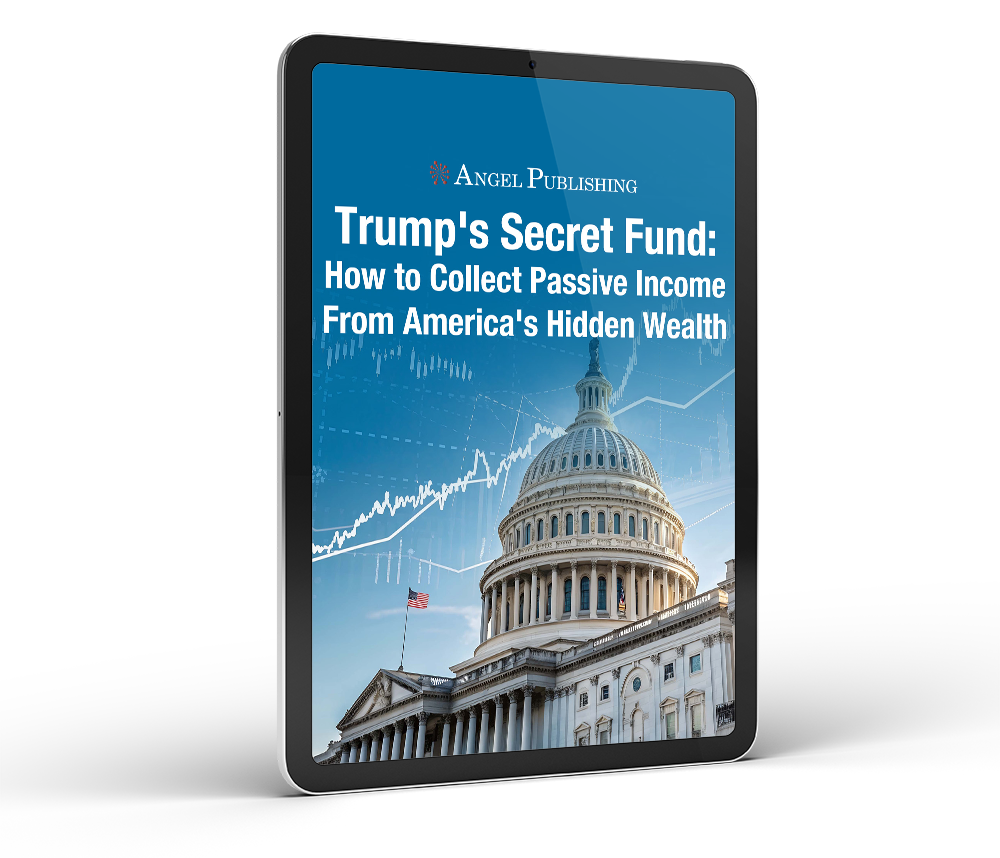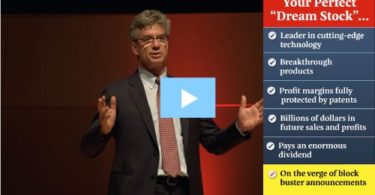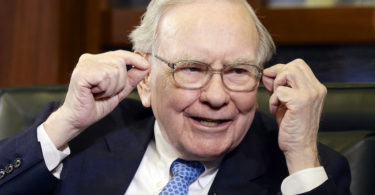Recent Evercore Upgrade and Thesis ##
CubeSmart (NYSE: CUBE) – a leading self-storage REIT – has drawn fresh attention after Evercore ISI upgraded the stock to “Outperform” with a $48 price target ([1]). Evercore’s call implies roughly a 22% total return upside (including dividends) from recent levels ([1]). The upgrade reflects Evercore’s view that CubeSmart’s valuation is appealing and that improving housing market trends could provide a tailwind for demand in the coming year ([1]). Notably, CubeSmart shares have traded roughly flat in 2025 (year-to-date) ([1]), underperforming the broader market, as higher interest rates earlier pressured REIT valuations and kept the stock in a sideways range since early 2022 ([2]).

Evercore’s bullish thesis centers on CubeSmart’s attractive valuation metrics and resilient fundamentals. According to Evercore’s analysis, the stock’s pricing implies an approximately 6.4% capitalization rate (unlevered property yield), which they view as attractive given the quality of CubeSmart’s portfolio ([1]). They also note the stock trades around a 16× forward AFFO multiple based on 2026 estimates ([1]) – a reasonable or even cheap earnings multiple for the self-storage space. Evercore highlighted CubeSmart’s strong operating platform (gross profit margins around 72% ([1])) and consistent profitability, suggesting the company’s financial health is solid. Moreover, Evercore believes any pickup in U.S. housing and moving activity (for example, more home sales or relocations) could boost CubeSmart’s top-line growth, though this upside is not yet baked into their estimates ([1]). In short, Evercore sees CubeSmart as a stable, income-producing REIT with valuation upside, hence the $48 target and upgrade.
Dividend Policy, Track Record & Yield ##
A key part of CubeSmart’s investor appeal is its shareholder-friendly dividend policy. The REIT currently pays a quarterly dividend of $0.52 per share (raised in early 2024), which annualizes to $2.08 per share ([3]). At the recent share price, this equates to a dividend yield around 5% ([1]) – a generous payout relative to many peers. In fact, CubeSmart has consistently paid dividends for 21 years running ([1]), reflecting a long commitment to returning cash to shareholders. Even more impressively, the company has achieved 15 consecutive years of dividend increases, the longest active growth streak among all self-storage REITs ([4]). For perspective, CubeSmart’s annual dividend per share has surged roughly +59% over the past five years ([4]), outpacing many real estate sectors. For example, the 2023 dividend of $1.96/share was about 13.9% higher than 2022’s $1.72/share – following a particularly strong pandemic-era performance ([2]). Management’s ability to raise the payout regularly, even through economic cycles, underscores the durability of CubeSmart’s cash flows and its REIT mandate to distribute income.
🔥 Trump's $15 Trillion Crypto Shocker — Free Playbook
James Altucher just opened a window for potentially life-changing crypto gains. Get the exact 5-coin playbook he’s using — including the #1 coin that isn’t BTC or ETH.
Despite these robust dividends, CubeSmart’s payout remains reasonably covered by operating cash flow. The company generated adjusted funds from operations (FFO, as adjusted) of $0.65 per share in the latest quarter ([5]), and it forecasts full-year 2025 FFO of approximately $2.54–$2.60 per share ([3]). This implies a payout ratio of roughly 80% of FFO, which is typical for a REIT of its profile – distributing the majority of earnings but retaining a cushion for reinvestment. Indeed, CubeSmart’s dividend commitments are supported by its stable FFO and consistent same-store performance. Even though industry conditions have moderated from the peak pandemic boom, CubeSmart managed a slight increase in FFO/share in Q2 2025 (up ~1.6% year-over-year) ([5]). The REIT’s long-term FFO growth has been strong (+144% in FFO per share over the last decade through 2024) ([4]), enabling steady dividend growth alongside. Looking ahead, investors can likely expect modest dividend raises to continue, although the pace of growth may depend on reaccelerating same-store revenue trends. Overall, CubeSmart’s 5% yield and decades-long dividend track record make it attractive for income-focused investors, with the Evercore upgrade suggesting confidence that this yield is also backed by share price appreciation potential.
Leverage, Debt Maturities & Coverage ##
CubeSmart maintains a conservative balance sheet for a REIT, which bolsters its financial stability. The company carries an investment-grade credit rating (rated BBB/Baa2 by S&P and Moody’s) and uses moderate leverage in its capital structure ([4]). As of Q1–Q2 2025, CubeSmart’s net debt-to-EBITDA stands near 4.8× ([4]), a reasonable level for a real estate enterprise of its size. In terms of overall capitalization, debt represents roughly 25% of CubeSmart’s total enterprise value ([4]) (i.e. ~25% loan-to-value), meaning the vast majority of the asset value is funded via equity. This relatively low leverage provides flexibility and keeps interest obligations manageable. Notably, CubeSmart’s fixed-charge coverage ratio is about 7.4× ([4]), indicating that earnings comfortably cover interest expense many times over – a sign of strong debt service capacity. In practical terms, the firm’s interest costs remain low (weighted average interest rate around 3.3% on its debt) thanks to prudent fixed-rate borrowing ([4]). Approximately 88–89% of CubeSmart’s debt is fixed-rate ([4]), which insulates the company from rising interest rate volatility. The limited portion that is variable (under 12%) mostly relates to its revolving credit facility, which the company can manage actively.
G
The Golden Anomaly — explained
Tap to expand for Buffett's probable target + 4 small miners with 10–100x potential
Debt maturity exposure is also well-staggered. CubeSmart has no outsized “wall” of debt coming due imminently – its weighted average debt maturity is ~3.9 years ([4]), extending into late this decade. The company’s debt maturity schedule is balanced annually through 2032, reducing refinancing risk in any single year. For example, in the 2025–2026 timeframe, maturities are moderate (on the order of a few hundred million dollars per year) and can likely be met with retained cash flow or opportunistic refinancing. The firm maintains a sizable $850 million revolving credit line as liquidity backup ([4]) (with about $831 million available as of year-end 2023) ([6]), which provides short-term funding flexibility if needed for acquisitions or debt repayment. CubeSmart’s recent financing actions reflect its discipline – in Q2 2025, it issued no new equity via ATM and largely funded its activities through internal cash and selective debt use ([3]). In fact, the company tapped its balance sheet to acquire a joint-venture partner’s interest in 28 stores for ~$453 million in early 2025 ([3]), demonstrating it can pursue growth while keeping leverage at reasonable levels. With a debt-to-equity ratio near 1.0 and ample interest coverage ([7]) ([4]), CubeSmart’s financial footing appears solid. This prudent leverage profile should help the REIT navigate the current higher-rate environment and support its dividend and expansion plans without undue balance sheet stress.
Valuation and Comparative Metrics ##
Even after a recent uptick on the Evercore upgrade, CubeSmart’s valuation appears undemanding relative to its fundamentals. The stock currently trades in the low-to-mid $40s per share, which on 2025 guidance equates to roughly a 16× price-to-FFO multiple – in line with, or slightly below, the self-storage sector average. Evercore specifically cited CubeSmart’s ~16.3× 2026 AFFO multiple as evidence of a compelling value proposition ([1]). This suggests investors are paying about 16 times next year’s expected cash earnings, a reasonable ratio given CubeSmart’s asset quality and stable cash flows. For context, during the low-interest-rate era (pre-2022), storage REITs often traded at 20× or higher FFO multiples; thus today’s valuation reflects a significant de-rating as interest rates have risen ([2]). Another lens: at the current price, CubeSmart’s implied cap rate is approximately 6.4% ([1]), meaning the stock’s enterprise value is roughly 15.6× the property-level net operating income. A 6.4% cap rate is relatively high (i.e. cheap) for the storage industry, given that prime self-storage assets historically changed hands at sub-5% cap rates during the boom. This higher cap rate implied by CUBE’s stock indicates the market may be pricing in slower growth or higher risk, which could prove overly pessimistic if fundamentals stabilize.
In absolute terms, CubeSmart’s share price is still well below its prior highs. The stock hit a 12-month peak of about $55 in the past year ([7]), and was even higher (~$57) at the end of 2021, before inflation and rate hikes put pressure on REIT valuations. As of late 2023, CUBE was trading over 20% below its 52-week high ([2]). This pullback, combined with the 5% dividend yield, sets the stage for potentially attractive total returns if the company can deliver modest growth. Wall Street analysts generally have neutral views – as of mid-2025, the average price target was around $46–$47 per share ([7]), and most ratings were “Hold.” Evercore’s more bullish $48 target is slightly above that consensus, reflecting their conviction in a positive thesis. When comparing to peers, CubeSmart’s valuation looks reasonable and not overly stretched. Larger competitor Public Storage (PSA) and peer Extra Space Storage (EXR) also trade in the mid-teens P/FFO range and offer dividend yields in the 4–5% range, so CubeSmart is roughly on par, perhaps with a marginal valuation discount given its smaller size. Given CubeSmart’s consistent performance and portfolio of over 650 owned stores (plus 870+ managed for third parties) ([3]) ([3]), one could argue the stock deserves equal footing with those bigger names. If industry fundamentals improve (e.g. move-ins pick up and pricing power returns), there is room for multiple expansion – meaning CUBE’s P/FFO could rise toward higher teens, driving share price appreciation. In summary, CubeSmart’s current valuation leaves room for upside, which is exactly what Evercore’s upgrade is premised on. Investors are paid handsomely in dividends while waiting for the market to potentially recognize this value.
Key Risks and Red Flags ##
While CubeSmart’s outlook is generally positive, investors should keep in mind several risks and red flags that could impede the bullish thesis. Competition and new supply remain foremost concerns in the self-storage industry. CubeSmart faces competitive pressure from both local operators and large REIT rivals (Public Storage, Extra Space, National Storage Affiliates, etc.), and the entry of new storage facilities can weigh on occupancy and rental rates ([6]). In recent years, self-storage experienced a construction boom in many markets; CubeSmart’s same-store revenue actually declined ~0.5% year-over-year in Q2 2025 ([5]), partly due to pricing pressure as supply caught up to demand. If excess supply re-emerges or aggressive discounting is needed to maintain occupancy, CubeSmart’s growth and margins could stagnate. The company noted that its same-store NOI dipped about 1% in that quarter as expenses rose modestly ([5]) – a reminder that even this resilient sector isn’t immune to down-cycles. Investors should monitor occupancy levels (around 90–91% recently) and the rate of rent growth closely; any sustained decline in occupancy or need to cut rents would be a warning sign.
Macro-economic risks are another factor. Self-storage demand is linked to life events (moving, downsizing, etc.), so a weak economy or housing market slowdown could hurt CubeSmart’s ability to raise rents or keep units full ([6]). The company explicitly warns that adverse economic conditions in the real estate markets it operates in could negatively impact performance ([6]). During recessions or periods of low consumer mobility, move-in volumes might fall and tenants may consolidate storage usage, hitting revenue. CubeSmart’s fortunes are also tied to consumer behavior – for instance, if fewer people relocate or if businesses cut back on storage of inventory, demand could soften. On the flip side, one risk unique to the current environment is elevated inflation and operating costs (insurance, property taxes, utilities, labor for facility staffing). Higher operating expenses without commensurate rent increases would squeeze margins. While CubeSmart managed only a 1.2% increase in same-store expenses in Q2 ([5]), cost pressures (especially property tax hikes or wage inflation) could accelerate and pose a headwind.
Interest rate and financing risks are also pertinent, even though CubeSmart’s debt is largely fixed-rate. With around 11% of debt at variable rates and future refinancing inevitable, rising interest rates could incrementally increase interest expense over time ([6]) ([6]). The company acknowledges that higher interest rates or reduced availability of capital could adversely affect its financial performance and growth plans ([6]). Extreme scenarios – a credit market freeze or a sharp jump in rates – could make it harder to refinance debt or raise new capital, though so far CubeSmart’s investment-grade rating affords it good access. There’s also the general risk of over-leverage: if CubeSmart were to stretch its balance sheet for a big acquisition or face an unexpected earnings drop, leverage could spike and put pressure on its debt covenants ([6]). Currently leverage is moderate, but it bears watching, especially after the $452 million JV buyout this year. Additionally, external growth initiatives carry execution risk – the company’s strategy of acquisitions and developments must deliver the expected returns. Management has to be careful not to overpay for acquisitions or mis-time development projects. As noted in filings, a failure of acquisitions or projects to perform as expected is a stated risk factor ([6]). Lastly, regulatory and environmental risks (like property zoning changes or climate events) exist, although these are not unique to CubeSmart. The bottom line is that while CubeSmart enjoys a stable business model, investors should remain vigilant about oversupply dynamics, economic cyclicality, and interest rate trends – all factors that could temper the bullish case if they turn unfavorably.
Open Questions and Outlook ##
Looking ahead, a few open questions remain as CubeSmart works to unlock the value that Evercore and others foresee:
– Will a housing market rebound materialize? Evercore pointed out that an improving housing market (more home sales and moving activity) could boost CubeSmart’s top-line growth, yet they have not assumed this upside in their estimates ([1]). If U.S. housing activity picks up in 2024–2025, it could translate into higher storage unit demand, providing an unexpected lift to occupancy and rental rate growth. A key question is whether such a rebound is likely – or if the housing market remains subdued, in which case CubeSmart’s growth may stay modest.
– Have fundamentals hit an inflection point? After a period of slight same-store revenue declines in 2023–2025, investors are wondering if operational fundamentals have bottomed out. CubeSmart’s management sounded cautiously optimistic, noting “fundamentals have continued to stabilize” with a lessening impact of new supply and healthier seasonal demand in recent months ([5]). The open question is whether this stabilization will translate into a return to positive same-store revenue and NOI growth in 2024. Will pricing power improve as supply additions slow down, or could economic headwinds keep growth tepid? The trajectory of rental rates and occupancy into the winter and spring leasing seasons will be telling.
– Can CubeSmart sustain its dividend growth pace? The REIT’s dividend track record is stellar, but maintaining annual raises in the high-single-digit percentage range may prove challenging if FFO per share growth remains low. With an ~80% payout ratio of FFO ([3]), future dividend hikes will likely track FFO growth closely. If fundamentals surprise to the upside (or if CubeSmart finds accretive acquisitions), dividend increases could continue at a healthy clip. However, if FFO growth stays roughly flat, the company might opt for more modest dividend bumps to preserve coverage. Investors will be watching the next dividend announcement (typically in January) to gauge management’s confidence in cash flow trends.
– How will CubeSmart fund growth opportunities? With a strong balance sheet and liquidity, CubeSmart is positioned to pursue acquisitions or development projects, but the cost of capital is higher today than a few years ago. An open question is how aggressive management will be in expanding the portfolio. Will they utilize their ~$850M credit line and then issue equity via the ATM program (up to 13.5 million shares remaining) if a big acquisition arises ([3])? Can they find deals at cap rates above their cost of capital (to make them accretive)? Thus far in 2025, CubeSmart has been prudent – it acquired a JV stake and added some managed stores, but did not buy new properties outright ([3]). The outlook for external growth may depend on market opportunities and whether asset valuations become compelling. If storage property prices fall (higher cap rates), CubeSmart could potentially step up acquisitions, but that might require capital raises that investors will scrutinize.
– Is the market properly valuing CubeSmart’s quality? Finally, there’s the overarching question of valuation. Evercore sees undervalued conditions today ([1]), but will other investors come around to that view? Storage REITs have historically traded at premium valuations due to their stable cash flows and high margins. If interest rates stabilize or decline, income-focused investors might rotate back into REITs like CubeSmart, which could compress the cap rate (boosting the stock price). On the other hand, if rates stay elevated or if the market worries about 0% growth, the stock could languish at the current mid-teens multiple. The resolution lies in execution: if CubeSmart can resume even mid-single-digit FFO growth, it may catalyze a re-rating of the stock. In the meantime, shareholders are being paid well (5% yield) to wait, and the Evercore upgrade underscores a growing sentiment that the risk/reward is tilted favorably at current valuation levels ([1]). The next few quarters’ results – and any commentary on demand elasticity or pricing – should shed light on whether CubeSmart can indeed achieve the $48 upside that Evercore anticipates.
Overall, CubeSmart stands as a solid, income-generating REIT with a robust track record, and now a notable endorsement from Evercore ISI. The $48 potential is on the table, provided the company navigates the aforementioned risks. Investors will be watching execution and market trends closely, but for now CubeSmart offers a blend of steady dividend income and value Upside, making it a REIT to watch in the self-storage space.
Sources
- https://in.investing.com/news/analyst-ratings/cubesmart-stock-rating-upgraded-by-evercore-isi-on-housing-market-potential-93CH-5004435
- https://incomeinvestors.com/cubesmart-stock-self-storage-reit/67106/
- https://investors.cubesmart.com/news/news-details/2025/CubeSmart-Reports-Second-Quarter-2025-Results/default.aspx
- https://sec.gov/Archives/edgar/data/1300485/000129867525000027/cube-20250602xex99.htm
- https://investors.cubesmart.com/news–events/news-details/2025/CubeSmart-Reports-Second-Quarter-2025-Results/default.aspx
- https://sec.gov/Archives/edgar/data/1300485/000129867524000011/cube-20231231x10k.htm
- https://marketbeat.com/instant-alerts/cubesmart-nysecube-price-target-raised-to-4700-at-evercore-isi-2025-05-02/
For informational purposes only; not investment advice.





